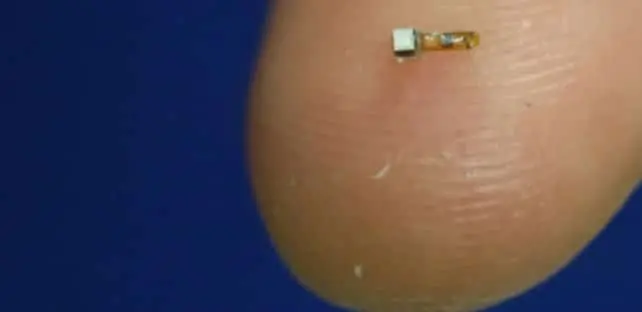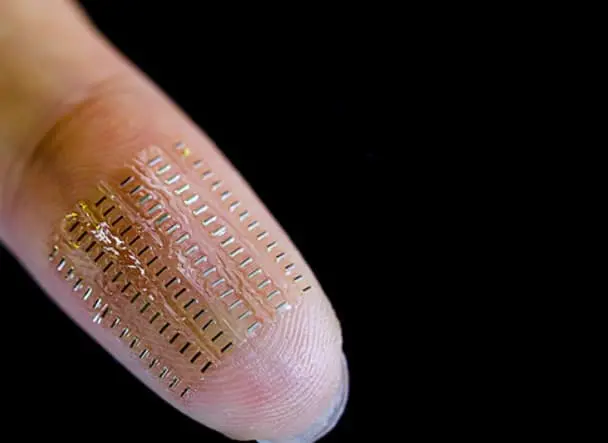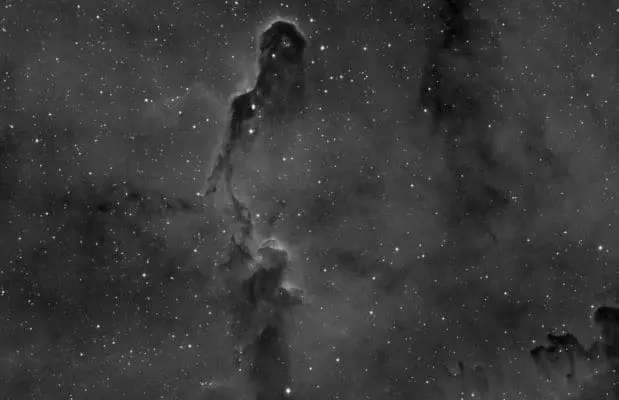If you have heard about latest and new nanotechnology and smart dust but aren’t sure how they work. Smart Dust sensors can monitor air quality, detect and predict natural disasters, track and manage supply chains, and monitor critical infrastructure like bridges, dams, and pipelines. In healthcare, Smart Dust sensors can monitor vital signs and drug administration, track patient movement, and detect infections in real time. In defense, Smart Dust sensors can be used for surveillance, reconnaissance, and battlefield monitoring. This operates by creating a wireless mesh network in which the sensors communicate with one another to transmit data to a central processing unit.
With the help of this, they can continuously monitor and analyze the environment. Smart Dust sensors are robust, dependable, and compact despite this. They are also inexpensive, which makes them a desirable choice for widespread deployment. Here is everything you need to know about Smart Dust and how it will change the present technology.
What you will see?
What is Smart Dust?

Smart Dust employs microscopic wireless sensors to build networks that can perceive and communicate data about the environment. These tiny sensors, motes, may fit on the tip of a finger and some of them are even smaller than a grain of sand. You can pre-program algorithms into the sensors to carry out particular jobs. This can help in measuring temperature, humidity, light, sound, motion, and the presence of gases or chemicals. Additionally, the power source enables them to run independently for a long time. They are therefore perfect for distant and challenging places. They can be used in defense, healthcare, industrial control, and environmental monitoring.
Smart Dust Working technology
Smart Dust networks use tiny sensors called “Motes” to collect and transmit information about the environment. These sensors are incredibly small, with a volume of just a few cubic millimeters or less. Despite their size, they have everything they need to function. This includes sensing capabilities, computing power, wireless communication, and a power source.
To create these sensors, engineers use MEMS technology. This stands for Microelectromechanical Systems. Levers, springs, membranes, and other mechanical and electrical components are combined to produce sensors and actuators. Together, these elements sense and convey information about their surroundings.
As technology advances, MEMS components are becoming smaller and smaller. This led to the development of NEMS or nanoelectromechanical systems. These even smaller components allow for the creation of sensors that are incredibly small, just like dust particles. Smart Dust sensors can float in the air like dust particles. This makes them perfect for uses like tracking the movements of people or vehicles or for monitoring the environment. These sensors can be used to collect data invisibly because of their small size. Temperature, pressure, vibrations, and the presence of poisons are a few examples of this. They are easy to deploy in huge numbers because they are typically 1mm in size.
What does it do?
Once deployed, the motes collect information and wirelessly transmit it to larger computer systems. This information can then be processed and analyzed to provide insights into the environment being monitored. The motes’ combined small size and wireless data transmission capabilities give them their power. Depending on the mote’s processing capacity, the data may be processed there as it is being gathered.
Smart dust sensors can also send signals to a command computer. This then compiles the information to provide feedback to plant managers. Alternatively, the information collected by the sensors can trigger routine actions.
The US Defense Advanced Research Projects Agency (DARPA) is developing a program called SHIELD. This uses microscale circuits to authenticate and track the supply chain of computer chips for defense applications. The miniature sensors can detect everything from light to vibrations to temperature. It integrates various capabilities into a compact form factor, MEMS (Microelectromechanical Systems). Despite its tiny size, smart dust incorporates sensing abilities, self-sufficient power generation, computational capabilities, and wireless communication within a volume measuring just a few millimeters.
These devices excel at gathering a wide range of data, including measurements related to acceleration, stress, pressure, humidity, sound, and other parameters. Additionally, they have the ability to wirelessly transmit the data to other MEMs, a base, or the cloud in addition to storing it in memory. MEMS is an effective tool for industries from agriculture to healthcare, due to its capacity to collect and analyze data in real-time.
Concept
In the 1990s, Dr. Kris Pister, an electrical engineering professor at the University of California, proposed a new method for deploying intelligent wireless sensors called “Smart Dust”. He believed that by scattering sensors everywhere, anything could be measured, including checking the weather. Initially, he thought of environmental applications, but the military provided the inspiration and funding for the project. Pister’s Smart Dust project was funded by DARPA in 1992.
Components of mote

Smart dust mote devices have four components: sensors, circuitry, communication, or power supply. These tiny devices have sensors that can detect and measure various things such as vibration, temperature, pressure, sound, light, magnetic field, etc. Microcontrollers process and store data, while a transmitter and 3D antenna are used for communication. Depending on the area of operation, a solar cell array, a thin-film battery, or a supercapacitor can power the mote. These devices are becoming smaller and smaller, leading to the creation of intelligent dust motes with autonomous vision. Researchers have even successfully tested multi-lens objectives with sizes of about 100 microns, about the size of a grain of salt.
These lenses have exceptional optical quality and come with resolutions of up to 500 line pairs per millimeter. Scientists are working on creating even smaller energy storage devices to power the mote’s microelectronic components. Nanosupercapacitors, for instance, are the size of a speck of dust but have the voltage of a AAA battery.
primary features of motes
Motes possess the ability to detect and measure a wide array of parameters. This includes light, position, stress, acceleration, pressure, humidity, vibration, and sound. These motes efficiently exchange data with each other, relaying it from one mote to another until it reaches the transmission node. Equipped with numerous miniature sensors, they gather and combine relevant data essential for their designated tasks. Furthermore, the motes are capable of analyzing the collected sensor data based on system controls and effectively communicating the results to other motes as well as the central base station.
3D printing on the microscale
These parts of these devices are produced in one piece using a commercially available 3D printer. This helps in achieving an astounding level of intricacy. Additionally, certain earlier production constraints that limit the size of items are no longer there. The best image quality is possible with the optical lenses for these little sensors.
Neural smart dust in Neuroscience

Smart Dust refers to tiny wireless sensing devices and can assist in tracking people or objects as they move, the observation of weather patterns, the identification of environmental contaminants, and more. The technology also has the power to fundamentally change how we collect and analyze data across a wide range of organizations. This can bring change in healthcare, manufacturing, and agriculture.
Researchers are actively working to improve Smart Dust technology and make it even smaller and more advanced. They are developing nanoelectromechanical systems (NEMS) that can perform complex functions at the sub-micron scale. Moreover, they are also exploring the use of Smart Dust in the field of neuroscience. With the goal of developing tiny wireless devices implantation in individual nerves to monitor and stimulate nerve activity. While Smart Dust technology is still in its early stages, its potential applications and benefits are vast and exciting.
challenges and Limitations
Smart dust is a tiny wireless sensor network with many small autonomous sensors. These sensors have sensing, computing, and wireless communication capabilities. These sensors are so tiny that they can disperse across the environment and are therefore essentially undetectable. Numerous possible uses for smart dust exist, ranging from environmental monitoring to military spying. However, privacy issues make the usage of smart dust debatable as well. There is a chance that these devices could be used for unauthorized monitoring or data collecting because they are so small and challenging to detect.
In addition, smart dust has been limited by the challenge of providing sufficient power to operate these tiny devices. This has led researchers to investigate various power sources, such as thermal, vibrational, light, or radio waves, to power these devices. In spite of these difficulties, advances in packaging and nanoelectronics have made it possible to incorporate various nanoelectronic chiplets. This combines photovoltaics, memory, and computers into affordable, compact systems with outstanding performance. Smart dust systems powered by solar energy that are more potent and compact than ever before could be produced on a big scale because of this technology.
Practical Applications
Smart dust has the potential to revolutionize various industries by providing detailed information about the environment. In Agriculture, it can monitor crops on a large scale, helping farmers determine the ideal watering, fertilization, and pest control needs. Thus, resulting in higher-quality and more abundant crops. In industries, it can monitor equipment continuously, identifying weaknesses and corrosion before a failure occurs. This can enable timely maintenance to prevent system failures. It can help in environmental monitoring for health and safety using chemical and biological methods. For instance, monitoring water, air, and soil quality.
Smart dust can aid in urban infrastructure monitoring by monitoring buildings, roads, bridges, tunnels, water and sewer pipelines, electrical and telecommunications grids, and more. It can improve inventory control using microelectromechanical systems (MEMS) technology and track products from manufacturing facilities to shipping containers to retail shelves. In healthcare, it can help in diagnostic treatments and monitoring devices that assist persons with disabilities. Smart dust can help monitor temperature, humidity, and aeration when transporting perishable items and aid in keeping an eye on the well-being of animals during transportation. Additionally, the military can use smart dust sensors to access operations in off-limits or inaccessible locations. They can detect the presence of poisonous gases or other dangerous compounds.
In space exploration, it can monitor the weather and seismic activity on the planets and moons. Its ability to collect data and provide real-time feedback can impact a variety of industries, from safety to compliance to productivity. In essence, smart dust technology multiplies the Internet of Things technology millions or billions of times over, and its potential applications are almost limitless. If a mote is applied to each of the fingertips, you can create a virtual keyboard. Your entire computer I/O would be invisible due to the MEMS augmented reality heads-up display.
Disadvantages–Privacy and Cost
Smart dust has sensors, microprocessors, and wireless communication capabilities. This allows them to gather and transmit data about their environment. The increasing use of smart dust raises a number of questions despite its potential advantages. Since these gadgets can record a lot of information without our awareness or agreement, privacy is a major worry. Because it is difficult to guarantee, sensitive or personal information obtained using this may be exploited for evil intentions. Once they have spread out over a region, it might be difficult to catch or get them back. This might make it simpler for criminals to employ them for their own ends. It could be challenging to find and stop this.
The cost of deploying smart dust is also a concern. Since this is still a relatively new technology, the cost of implementing a smart dust system that includes satellites and other elements required for full implementation is high. This makes it unaffordable for many people and organizations, limiting its widespread use. Furthermore, smart dust raises concerns about potential contamination. If not properly disposed of, these devices, which frequently have a single usage and are not biodegradable, could pollute the environment. Smart dust may also pose a concern to human health due to the possibility of harm from inhaling or eating these microscopic particles.
Lastly, there are legal concerns around the security of smart dust networks. If these networks are not secure, there is a risk of unauthorized third parties accessing the data collected by the devices and using it for illegal activities.
Conclusion
Large corporations like General Electric, Cargill, IBM, Cisco Systems, and others have invested in research for smart dust. However, workable applications think this technology will disrupt economies and the world. Since 1992, these companies have been at the forefront of innovation in developing smart dust technology. Many potential uses for smart dust are only in the concept stage. Although technology is rushing, many issues must be solved before you can see how it will affect your firm. It’s important to pay attention to its growth trajectory though, as it’s no longer something fictional. Even if we may be unable to foresee the exact moment when it will reach the point of general adoption, we do know that it is more a matter of when than if.
What are your thoughts about Smart Dust? Tell us in the comments section below.
















